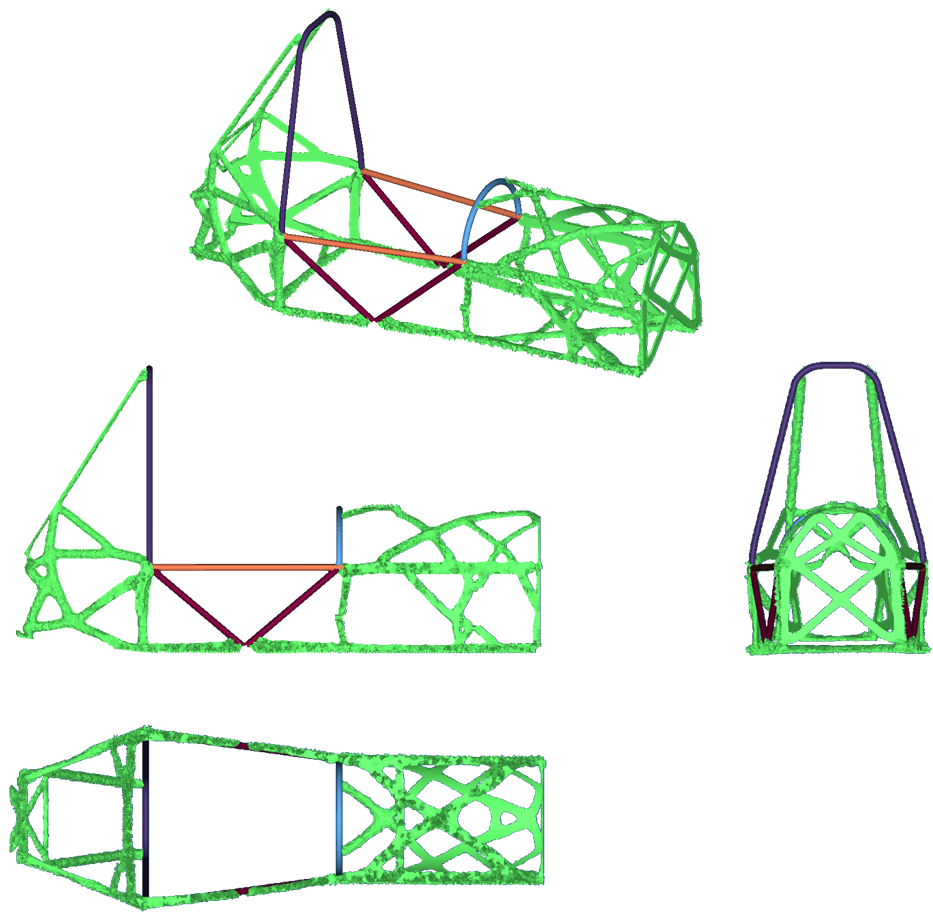CHASSIS AND IMPACT ATTENUATOR DESIGN FOR FORMULA STUDENT RACE CAR 30th August 2012
By
Ahmed Oshinibosi, Bentley, Leeds Graduate
Project Supervisor: Prof. D.C Barton
Read the full report here

ABSTRACT Generally, in the automotive industry, weight reduction, cost of engineering design and reduction in vehicle development cycle time are becoming increasingly focused on. In order to tackle this, Computer Aided Engineering (CAE) is popularly being used to lead design process. This is more efficient than just using CAE as a verification tool. In the design of the F15 chassis, suitable Finite Element Analysis (FEA) optimisation techniques have been adopted from the early design stage. The design problem in view of weight reduction and increasing torsional stiffness has been solved by means of topology optimisation and also by applying gauge optimisation at the later stage of the design phase to optimise the size of structural members of the chassis. Initial topology optimisation generated efficient load paths which were translated into two main concepts: Concept I & II - all tube design and Concept III - tube and sheet component design. All these proposals achieved specific torsional stiffness considerably higher than previous F14 chassis giving at least 4kg of mass savings. Similarly, in the development of the impact attenuator, surrogate FE models were built and parametric studies were set up to observe the influence of wall thickness, semi-apical angle, indentations and protrusions on crash performance. Subsequently, optimisations were set up to evaluate optimum values of these parameters. In the end, a conical frustum shell-type impact attenuator which incorporates asymmetric indentations and protrusions was proposed. Specific energy absorption was maximised and impact force minimised for this design. The effectiveness of the impact attenuator was measured by comparing the force transmitted through the chassis "with and without the crash tube" into the cockpit area. The crash tube reduced the amount of force transmitted into the cockpit area of the chassis to an appreciable level. Moreover, the acceleration measured at an area close to driver's position was also decreased.